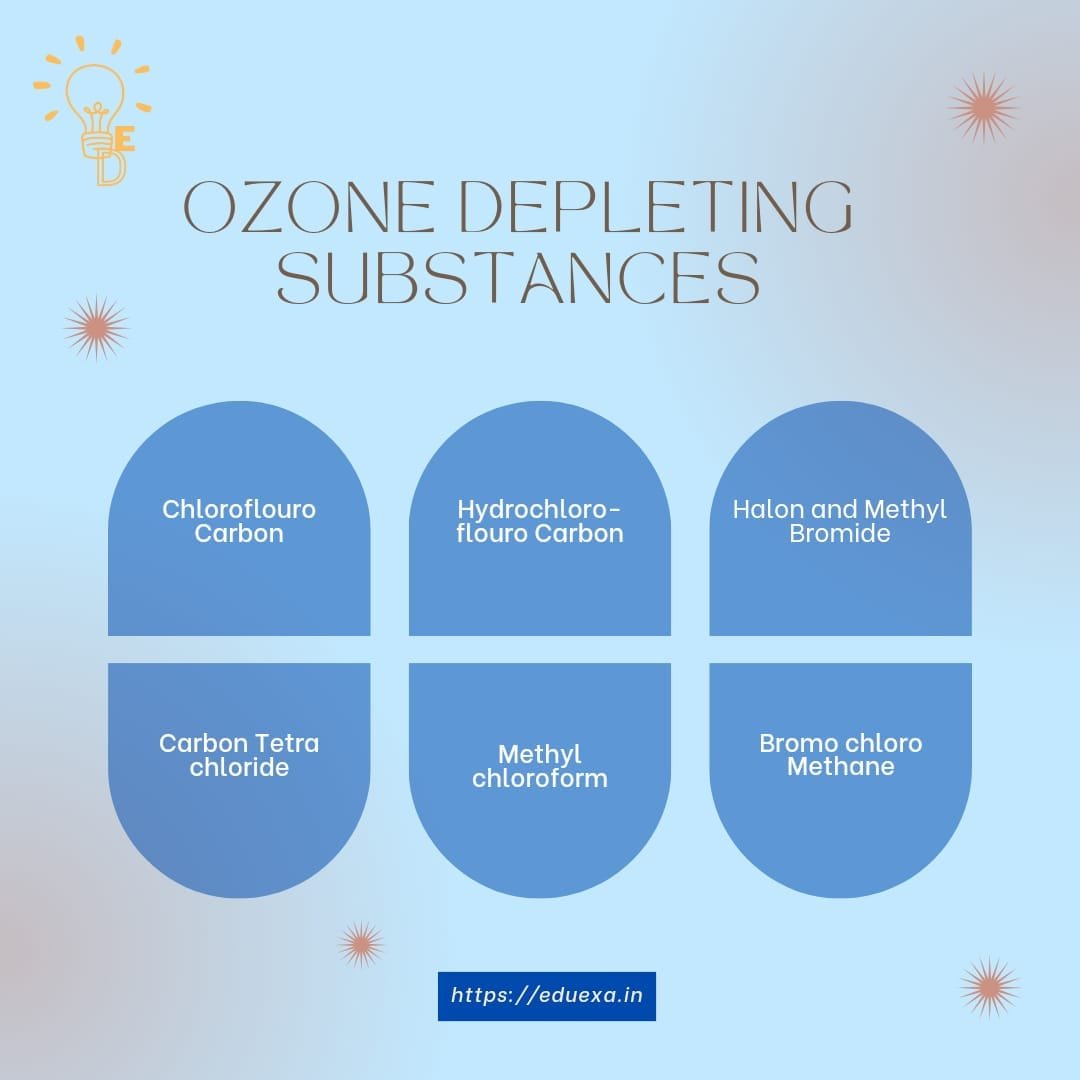Ozone Depleting Substances: A Complete Guide in 2024
What is ozone depletion?
Ozone layer depletion refers to the thinning of the ozone layer present in the upper atmosphere. This happens when the chlorine and bromine atoms in the atmosphere come in contact with ozone and destroy the ozone molecules.
Measuring unit
Ozone layer measured in Dobson unit. One dobson unit is number of molecules of ozones that would be required to create a layer of pure ozone of 0.01mm thickness at 0°C And 1 atmospheric pressure.
Over the earth’s surface ozone layer’s average thickness is about 300 dobson units i.e. 3mm thick.
Causes of Ozone Depletion
Anthropogenic activities have disturbed the natural equilibrium and now there is more destruction of ozone than formation.
The major reasons are
a) Supersonic Aircrafts can destroy the ozone layer as they fly in the stratosphere (because they emit nitrogen).
b) ozone depleting substances as part of industrial processes It has been found out that the ozone layer has thinned significantly over polar regions especially Antarctica. Brewer-Dobson circulation attempts to explain how tropical air has less ozone than polar air even though the tropical stratosphere is where most atmospheric ozone is produced. The same mechanism can also explain accumulation of ozone depleting substances in polar areas.
c) Other reasons
- Sunspots
- Nitrogenous compounds
Read a complete guide on Coral Reef here.
Prominent OD substances and their sources
1. ChlorofluoroCarbon (CFC)
At one point they were considered a miraculous industrial chemical because of its stability, nontonicity. They were widely used as coolants in refrigerators and air conditioners, as solvents in cleaners and degreasers and in production of foam. The ozone depleting potential of CFC11 is assigned to 1 as reference and potential of other substances is calculated based on the same amount of CFC level and the extent of destruction on ozone layer.
2. Hydro chloro fluoro Carbon (HCFC)
They were used as substitutes of CFC. Hydrogen makes them less stable and thus less impact on ozone depletion.
3. Halon
They are very effective at extinguishing fire. They have ozone depleting potential(ODP) of more than 1.
4. Carbon Tetrachloride
This was used as raw material in the production of CFCS It also has more ODP tham CFC.
5. Methyl Bromide
It is used as fumigator in agriculture, in packaging and even in food production strategy.
6. Methyl chloroform
It is used in cleaners, degreasers and adhesives.
7. Bromo chloro methane
It is mainly used as a fire extinguisher.
Global Initiatives to tackle ozone depletion
Vienna Convention, 1985 :-
It became the first international agreement to protect ozone layer in 1985 and paved the way for montreal protocol.
Montreal Protocol, 1987 :-
It is a legally binding agreement which aims at reducing the production and consumption of ozone depleting substances It has become one of the most successful environmental treaties In Fact because of the initiatives taken under montreal protocol, many studies have found out that ozone layer is recovering in stratosphere.
Kigali Amendment to Montreal Protocol :-
This amendment plans to phase out production and consumption of HFC, which even though are not ozone depleting, their global warming potential is very high.



